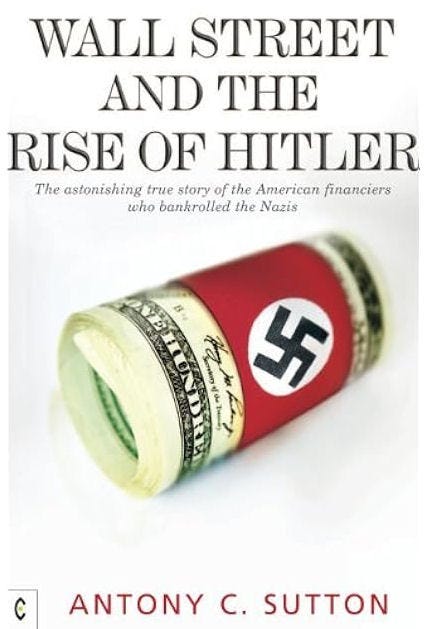“Wall Street Paves the Way for Hitler”
From chapter 1:
As described by Carol Quigley, this system was “. . . nothing less than to create a world system of financial control in private hands able to dominate the political system of each country and the economy of the world as a whole.” This feudal system worked in the 1920 as it works today [in 1976], through the medium of the private central bankers in each country who control the national money supply of individual economies. . . . Politicians amenable to the objectives of financial capitalism and academics prolific with ideas for world control useful to the international bankers are kept in line with a system of rewards and penalties (p. 27).
In brief, in synthetic gasoline and explosives, two of the very basic elements of modern warfare, the control of German World War II output was in the hands of two German combines created by Wall Street loans under the Dawes Plan. . . . Henry Ford was decorated by the Nazis for his services. . . . American companies associated with the Morgan-Rockefeller international investment bankers—not, it should be noted, the vast bulk of independent American industrialists—were intimately related to the growth of Nazi industry. It’s important to know as we develop our story that General Motors, Ford, General Electric, DuPont, and the handful of US companies intimately involved with development of Nazi Germany were—except for the Ford Motor Company—controlled by the Wall Street elite, the JP Morgan firm, the Rockefeller Chase Bank, and to a lesser extent, the Warburg Manhattan Bank. . . . It is these US connections in Wall Street that concern us. Without the capital supplied by Wall Street, there would have been no IG Farben in the first place and almost certainly no Adolph Hitler in World War II (p. 31, 33).1





